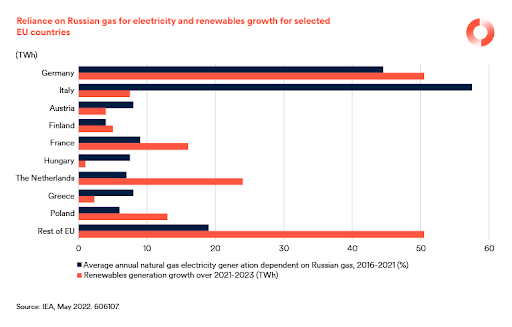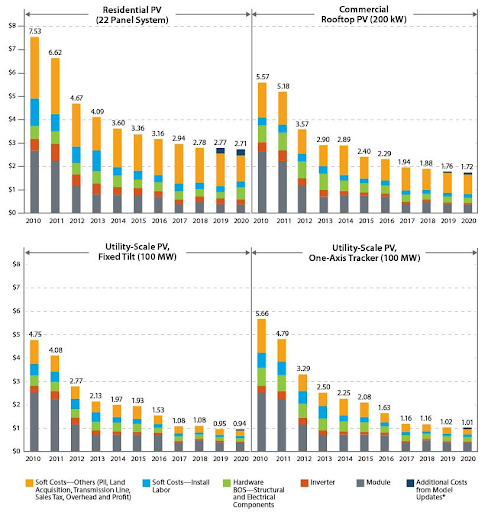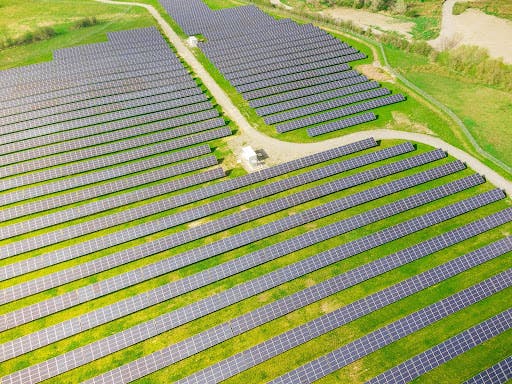Solar Power Project Financing: Funding Your Solar Project
29 Mar 2023

Identifying funding for a solar project can be one of the greatest hurdles for a developer. For utility-scale projects especially, which require a good amount of capital, securing funding while minimising risk is essential to success.
This article will act as a guide for solar project developers, both experienced and novice, discussing everything from the benefits of developing solar, potential issues that one might face, and some of the key considerations that developers should keep in mind when seeking out and deciding on the best solar project financing options.
Benefits of Developing a Solar Project
There are many benefits to investing in solar projects for individuals, companies, developers, and the wider world. Firstly, there are obvious environmental benefits, given that increased renewable energy including solar, allows for the continuation of the shift away from fossil fuels.
There are also great benefits in terms of profit generation from large-scale projects. For developers, solar farms are a great investment from a profit-generating standpoint for three main reasons:
- Ongoing income from the sale of electricity
- Potential to develop and then sell the project for a profit
- Current government policies have created a favourable environment for investment in solar projects
Sale of Electricity
The most obvious benefit comes from the sale of the electricity that is produced through the solar project. Depending on where you are in the world, a 1-megawatt solar project typically generates upwards of $40,000 per year from the sale of electricity and significantly more than this in some markets.
The upfront costs associated with the preparation of the land for the solar project are the biggest obstacle. However, this means that solar projects can easily benefit from economies of scale. This is because adding more solar panels will generate more electricity without higher upfront costs – besides perhaps the price of a larger plot of land, but it will not create more legal or planning fees. Additionally, purchasing solar panels in bulk may be cheaper!
Sale of Project
Another potential benefit for solar developers is in the sale of the project. A developer may sell the project at a variety of stages, from pre-development to ready-to-build, to operational.
Projects in later stages will generally sell for more, but this means that many of the upfront costs will already have been paid for by the developer – the selling stage will depend on the developer’s strategy. The sale of a solar project to a larger developer or investor can yield significant profits for the project owner.
Government Incentives
Governments across the world are keen on encouraging the development of renewable projects for several reasons, including energy security and meeting agreed-upon climate targets.
From 2016-2021, different EU countries relied on Russian oil for between 5-60% of their electricity generation (see graph below), and in 2020, Russia supplied 39% of natural gas, 23% of oil, and 46% of coal imports in the EU.
This realisation of reliance on foreign energy sources, specifically fossil fuels, has prompted investment in EU renewable energy production efforts. This, coupled with the EU's targets to become carbon neutral by 2050, demonstrates exactly why there is a large government emphasis on renewable incentives at the moment.
For developers, this government help means that it is not only a great time to enter the renewable energy sector but also, a great time to turn large profits.
The state of New Jersey in the USA offers 30% tax credits for community solar project developers. This credit can be as high as 50% for projects meeting certain requirements in terms of the location they are built in and the wages they offer. Many governments, from local to national scale, may offer rebates and other financial incentives that can help with the transition to renewable energy.

Source: Schroders Different Types of Solar Projects
There are many different types of solar projects, which vary in size and goal. Smaller-scale projects, such as residential and commercial projects, are generally built to bring power to one building and use only the rooftop of a building.
The scale can range from a small home to a large company headquarters or manufacturing facility. Utility-scale projects are larger, ground-mounted, and aim to bring electricity to many buildings.
Smaller-Scale Projects
Commercial, industrial, and residential projects are similar in aim and have similar benefits in terms of cost reduction for families and businesses. These rooftop solar projects are large enough to significantly reduce costs on electricity bills for single buildings, but generally too small to produce the excess electricity needed to create profit.
Utility-Scale Projects
Utility-scale solar projects are larger and consist of a few hundred or thousand solar panels on a plot of land, producing 10 MW or more of electricity.
While smaller-scale projects are more straightforward rooftop ‘add-ons' to homes and businesses, utility-scale projects are built with the specific purpose of generating solar energy.
Currently, the largest solar project in the world has been developed in the northeast region of Rajasthan in India. The project produces around 2.7 gigawatts of electricity which is enough to power 4.5 million homes. These projects are capital-intensive, need large swathes of land, and require meticulous planning to succeed.
Planning considerations generally include feasibility studies and cost-benefit analyses, among other licensing applications. These add to existing upfront costs, making early funding essential to the success of utility-scale projects.
For more context on funding requirements, the project in Rajasthan has benefited from over $300 million in funding from a variety of sources. These factors, coupled with regulatory and policy issues, can make development rather complex.
Difficulties of Generating Funding for Solar Energy Projects
Though there may be great environmental benefits from solar energy projects, the key to obtaining funding for solar power projects remains in making the economics stack up.
The cost of solar energy generation, from residential to utility-scale, has decreased significantly over the past decade, largely due to decreases in the price of the solar panels themselves. For example, according to the World Economic Forum, the cost of generating 1MWh of solar energy has fallen from an average of $378 in 2010 to $68 in 2019.
According to a study conducted by the US government's National Renewable Energy Laboratory, the cost of a solar panel in 2010 was around $2.50 per watt but is now closer to $1 per watt (see graph below). Additionally, whereas the cost of materials was previously closer to 50% of the initial solar project development costs, this is now closer to 10% for some companies. This decrease in costs can largely be attributed to increases in manufacturing efficiencies and as such, manufacturing costs. However, this upfront cost, among others, still represents a significant and often problematic investment for many businesses and organisations.

Source: NREL
The biggest challenge in raising funding is attributed to the large levels of early-stage risk. With all costs taken into account, a 1MW solar project can cost between $820,000 and $1.36 million, but returns on the solar project investment are 15.55% on average.
These upfront costs include site surveys, feasibility studies, planning permission applications, power generation licence applications, legal fees, site preparation fees, cost of materials, and many more.
Given the risks of permission applications getting rejected or developers' teams not being able to execute for other reasons, coupled with high fees, early-stage renewable projects can be very risky for investors.
However, once planning permission is granted, the projects are considered low-risk. Solar development is a rapidly growing industry, and with careful planning, all of these challenges can be overcome.
Different Types of Solar Project Financing Options
The upfront cost is the biggest obstacle in developing a solar project. However, given the rapidly growing global interest in sustainability and the shift towards renewable energy (see our article on the Italian Renewable Energy Landscape as an example of this), renewable energy project funding is becoming more accessible.
Funding for Smaller-Scale Projects
The first few financing options below are best for residential, commercial, and industrial-scale projects. There are pros and cons to both options depending on one's available funds.
Self-Financing
A first option for those who have the capital available to fund the project on their own is self-financing.
The project owner pays for the equipment and installation costs. The greatest benefit of this option is that the individual or company then owns and has control over all of the energy produced; hence it is used most frequently for small projects where most or all energy is to be consumed.
Solar Leasing
While some may have the option to absorb the entirety of the cost, this is not always possible or most efficient.
Some individuals or companies may prefer to lease the solar PV system, this avoids the upfront costs of buying and installing the panels and other electrical equipment.
This option involves a fixed monthly payment to lease the solar panels and is a model mostly used on residential rooftop projects and some commercial and industrial (C&I) projects.

Funding for Larger-Scale Projects
For larger utility-scale projects, more funding is usually required.
There are a variety of options available, each reliant on different levels of third-party involvement. From the developer's perspective, the ideal scenario would be to obtain the funding required from the cheapest sources of capital, keeping most of the project's upside, whilst minimising their own exposure to investment risk.
For early-stage projects, equity is generally the most accessible option due to the presence of risks and the difficulty in mitigating them during the early stages of the development cycle.
For ready-to-build (RTB) or "shovel-ready" projects funding - primarily via debt - tends to work out cheaper than equity. However, options on this side are typically only available when a predictable source of revenue is obtained and locked in.
From a profit-maximising standpoint, a developer will often want to leverage debt as much as possible to minimise the equity investment requirements, allowing them to obtain rapid access to asset bases without being restricted by the size of their own balance sheet.
De-risking Revenue: Power Purchase Agreements
One of the ways to lock in cash flows is through a Power Purchase Agreement (PPA).
This consists of a long-term (usually 10+ years) agreement between the developer and an energy buyer wherein the buyer agrees to purchase the electricity generated from this project at a fixed rate. This buyer could be any organisation, from a corporation to a government, each with very different risk profiles.
For example, the UK's Transport for London (TfL), the governmental body responsible for London's public transport, has recently announced a tender for a 15-year PPA with a renewable energy developer. It plans to purchase 10% of its required electricity from this developer to begin its transition towards using 100% renewable energy sources by 2030.
This type of quasi-governmental organisation is typically considered to be at a very low risk of default; hence, the PPA revenue risk is low. Lower project operational risk means improved access to low-cost debt, which means the project is likely to be able to offer attractive rates back to TfL.
Power purchase agreements are key to the majority of utility-scale solar projects and a variety of other larger renewable energy projects. They create a low-risk and predictable source of revenue, given that the buyer is chosen carefully.
After establishing this source of revenue, any of the below funding options should be easily accessible to developers.
Bank Loans/Debt Financing
There are many different ways in which debt can be used to finance the majority (typically 60-80%, sometimes higher) of the capital outlay for a project.
A lender has no exposure to the project upside but has 100% exposure to the project downside. If the debt is defaulted on, a loan could be lost in its entirety, so the key to obtaining great terms is in understanding how the bank will perceive these risks.
Many forms of debt (e.g., personal loans and company loans) are calculated based on historical metrics. This could include the borrower's history of repayment patterns, their cash flow available for debt service (CFADS), and the risk associated with their revenue sources.
However, these historical measurements are typically used only when the entity in question is (a) to be held liable for making future repayments and also (b) has a prior history that can be assessed. This is not always possible, or even most optimal.
For example, for a brand-new developer, you have no track record of cash flow. You may also not want to be held liable for huge loan repayments on projects which greatly exceed the size of your balance sheet. So how can you borrow large tranches of debt to finance the construction of your first projects or to rapidly accelerate the number of projects you are developing?
Say hello to Project Finance.
Project Finance
Project Finance can be a game-changer for developers, allowing them to isolate risks, borrow more, and accelerate their development process significantly. So what is project finance?
The key difference between project finance and corporate financing is that the project is placed in a Special Purpose Vehicle (SPV), and loan repayments are made from, and liable to, cash flows generated by the project alone. In the case of simple solar project financing, the revenues are typically purely from selling the solar energy generated.
As such, the only revenue risks are off-taker/counterparty risk, with no other corporate activities adding potentially unpredictable complexities to calculations. This option is also generally associated with a non-recourse structure, meaning the collateral is limited to assets within the SPV, and hence there is no risk to the corporate owner's other balance sheet items.
Equity Financing
Lastly, for a project requiring lots of capital, a project owner may still require some equity financing. If a project is to be financed 60-80% by debt, then there still remains a 20-40% gap to be filled, and much of this is likely to be filled via equity (or shareholder loans, which are similar but potentially even more efficient).
Equity investment can come from the corporate owner itself, or they may wish to raise capital from external sources. This option involves the project owner issuing a certain portion of the equity in the project in return for funding. The benefit of this option is there is no "repayment" obligation in the same way as a loan. The investor receives payment in the form of a share of the profit that the project generates over time.
The project owner generally maintains control over the project but gives up a portion of ownership in the project. This means that if there is a large profit from the project, the investor will benefit. In the case of a loan, the lender is only paid back the amount of the loan. This potential profit can also give investors a sufficient risk-reward incentive to take on the larger risks associated with earlier-stage renewable projects.
How to Find Investors and Lenders for Your Solar Energy Project
Given the factors discussed above, finding investors and lenders for a solar power project may come with difficulties. Not only is it a challenge to find and connect with investors, but convincing them a project is worth it may also prove difficult.
Investors often have large networks that they can leverage to identify new opportunities. For less well-known projects, this may mean it's more difficult to break into the market and get attention.
Perhaps the most optimal way to get funding for a renewable project is to utilise a digital, renewable energy project marketplace.
PF Nexus is used by over 2,500 developers, investors, and lenders who are constantly searching for projects. Submit your project onto the platform, get matched via the algorithm, and receive introductions from interested partners directly to your inbox. This also helps to ensure your time is spent dealing with committed and responsive investors.
As a developer, this streamlines the process by eliminating the need to manually build, manage, and conduct repetitive and time-consuming outreach to a limited network of disinterested parties, the old-fashioned way.
It also avoids the classic issue of "speaking with the right party but at the wrong time." PF Nexus allows developers to connect with the most relevant partners from the world's largest specialist network of renewable energy investors, at the right time, to get funding quicker and easier than ever before.
Signing Off
Navigating the solar project development world can be complex, but with careful planning, developers can secure the funding to help their projects come to life. To speed up this process, access the PF Nexus platform today or get in touch to find out more.
Sources: